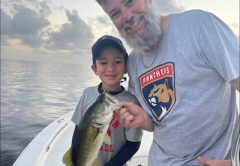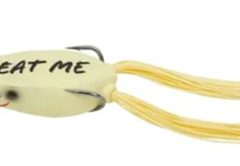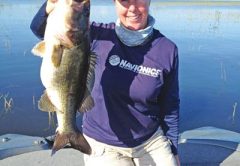On July 1, 2016, the new Largemouth Black Bass regulations as established by the Florida Fish and Wildlife Conservation Commission (FWC) will take effect. The goal of these new regulations is to simplify existing rules in the harvesting of Florida Largemouth Black Bass throughout the state and to improve wild stocks to ensure Florida remains the undisputed “Bass Fishing Capital of the World.”
In the summer of 2011 the FWC enacted its first Black Bass Management Plan (BBMP) with the goal of improving the ecological, economic and social benefits of our state’s Florida Bass resources. e plan includes preserving the genetics of the Florida Bass, managing lakes and invasive plants and animals, returning disturbed habitats to their natural state, managing and promoting the development of trophy size bass, and much more.
After gathering and reviewing data collected since before and a er the initiation of the BBMP, reviewing comments from public input, public meetings, independent surveys and consulting with biologists, the Commission concluded that Florida’s bass populations are healthy and harvest rates where low due to the popularity of catch-and-release fishing. To promote the growth and survivability of larger trophy bass, the Commission approved a modi cation in the daily bag limits and size limits of harvested largemouth bass. The new regulations allow for the taking of (5) bass per day of which only one bass may be over 16 inches in total length. The regulation is effective statewide and eliminates some forty site specific regulations presently in place including Lake Okeechobee and Lake Istokpoga. There will remain a few isolated lakes, rivers and Fish Management Areas (FMAs) that will have their own site specific restrictions but in general the new regulations will greatly simplify the harvesting of largemouth bass. Other bass species such as Shoal, Suwannee, Spotted and Choctaw will still have their own specific regulations since these fish do not grow as large as the Florida largemouth bass and many exist only in micro-habitats.
For most anglers harvesting bass for dinner, these new regulations will allow for anglers to fill their creels with greater ease and provide tastier fish for the dinner table. It will also enable the youngest of anglers to keep their catch no matter how small it is. For many first time anglers a 6-inch bass is their first bass and by default their first trophy bass. For tournament anglers, those fishing in permitted exempt tournaments, the new rules will not impact you. You still will be able to weigh-in a 5- sh limit that will be released alive. However it will impact those tournaments that sh without an exemption. With the limitation of one bass over 16 inches in total length per angler, some clubs may need to modify their tournament rules. For information about obtaining a bass tournament exemption permit, visit www.MyFWC.com and type in ‘bass tournament’ in the search area and it will take you to the permit section.
Under these new regulations, the new size limits are designed to target the harvesting of the younger year-classes of largemouth bass which are more bountiful and easier to sustain while protecting older breeding female bass that become our trophy size bass. The foundation of our present day bag limits has been in place for over twenty years and since that time much has been learned about the Florida Largemouth Bass and its environment. These new regulations are a step forward in sustaining Florida’s position as Bass Capital of the World.
[easy-social-share]







Is there a miminum size limit..?
Tom, there is no minimum size limit for large-mouth bass. If you\’re fishing with your child and they catch a 6-inch large-mouth bass, they can take it home to show mom. For other species of bass, such as Shoal, Suwannee, Spotted and Choctaw the size minimums on these species remains the same.. 12-inches